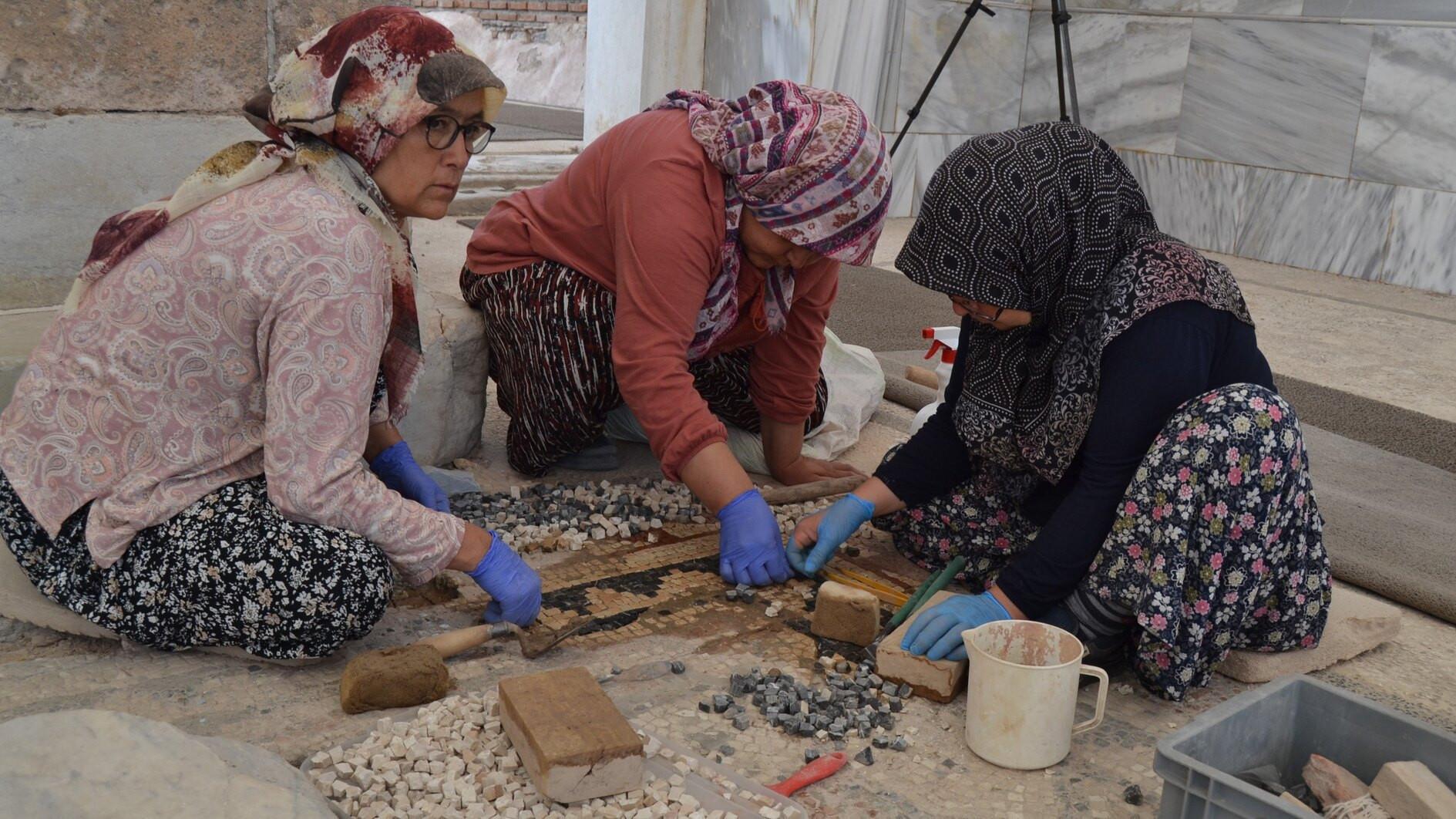
The floor mosaics of a nearly 2,000-year-old structure — regarded as the largest synagogue from the ancient period and located in Sardis, the ancient capital of Lydia, the first civilization to mint coins — are currently being restored to their original condition by women from a rural neighborhood in the region.
Archaeological excavation and restoration work in Sardis, located in the Salihli district of the western province of Manisa, began approximately 120 years ago and continues under the leadership of Professor Nick Cahill from the University of Wisconsin, the United States.
Dating back to the 1200s B.C., Sardis is home to many structures and artifacts from different civilizations.
Visitors of Sardis have the opportunity to see Lydian-era tumuli, the Temple of Artemis from the era of polytheistic religions, the largest recorded synagogue of the Ancient Age, the church mentioned in the Gospel of John and the ruins of a monumental bath and gymnasium from the Roman era.
The synagogue among these structures highlights the richness of religious tourism in the region.
The Sardis Synagogue, which was covered with a roof three years ago and where ground renovation work began last year, also draws attention with its mosaics on its ground.
Nine women living in the Sart neighborhood near the ancient city are taking on important tasks to restore the damaged mosaics during works that started three years ago.
The mosaics, being restored to their original state, are meticulously reinstalled by women trained specifically in this field.
Cahill stated that the synagogue discovered in Sardis in 1963 is the largest synagogue of the ancient world and that they have been working for three years to repair the damaged or missing mosaics on its floor.
Drawing attention to the fact that they renewed the mosaics with natural stones they obtained from different parts of Türkiye in colors that are true to the original, Cahill said that women are experts in this work that requires great care and that they reveal the patterns flawlessly.
Stating that they work with experienced and educated locals in the restoration of the mosaics, Cahill said, "They have been carrying out this restoration for three years, and we are filling the gaps with new mosaic stones. The patterns will be more easily seen in the future."
Sevinç Akçayım, one of the workers in the field, explained that she is working with her daughter and neighbors.
Noting that this job provides them with an income opportunity, Akçayım said, "We are touching history. When we grow old, our children will come here and say, 'Our mothers and aunts touched this place.' We are happy to bring history to life. We are very happy when we create a mosaic. It is nice to bring a work to life."